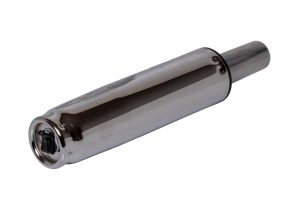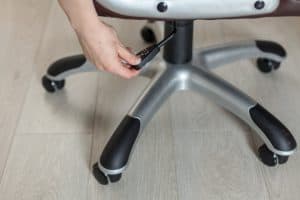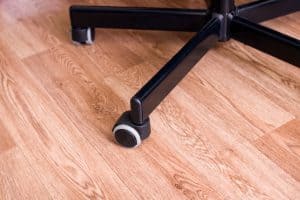Buying an office chair can be a huge investment for many, especially if you go for top quality. Choosing the right ergonomic office chair is not only a financial investment, but it is also an investment toward better health.
We spend a good part of our days in chairs, and it puts a lot of pressure on our spines, this can lead to body hurt – lower back, back, neck, or muscle pain and health issues. It only makes sense to choose an ergonomic office chair that will provide a considerable amount of support to our bodies and also will be comfortable.
Here’s a quick guide to help you choose the right office chair to cater to your needs and to stop your body from concurring with long-time issues because you were trying to save money. If you know what to look for, you can get the best office chair in your budget.
What type of chair is best for office work?
Depending on what you spend most of your time on, the answer can defer. If you get hot and spend a lot of time with your back completely rested on the backrest, you might want to go with a mesh chair. If you need a good headrest and your time is divided between working on your computer and holding meetings, you might want to go with a plush tall and high executive chair.
If you would want to include rests in your day and would like to rest at your desk, then you can go for a reclining chair. Different needs dictate different functions to be focused on, but a common thing that is needed is ergonomics.
No matter what type of chair you choose, make sure that it has good ergonomic adjustments. Ergonomic adjustments are what make even the most expensive office chair worth its price.
Features like lumbar support to fight lower back pain, back height that can be adjusted, armrest that can moved or pivoted, adjustable armrest depth, arm height, seat height, seat depth, seat cushion, forward seat tilt, tilt lock positions, flexible headrest, weight-activated mechanisms, etc. are things to consider depending on the amount of support and what type of support you need based on your use.
How much should you spend on an office chair?
A good chair in a mid-range budget will cost you $300-$400, and a top-quality chair will cost you upwards of $1000. That doesn’t mean you won’t get a good chair under $100.
The amount of money to spend depends a lot on the features you need in your chair. Here are some things you should consider when deciding your budget:
- The build and the quality of the chair.
- The features of the ergonomic office chair.
- How long will the chair last?
- What are the needs of your office or organization?
- How long is the warranty, and what does it cover?
- The number of chairs you need.
All of these things are necessary to check if an office chair you are looking at fits your budget.
Build Quality, Upholstery, and Material Used
You get what you pay for rings true in the case of office chairs as well. The material used to build the chair is important to test build quality. Plastics and metals help you achieve different sort of finish, durability and also come at different price points.
High-quality plastic can be long-lasting, too, so don’t be put off by that; they also serve various technologies that the office chairs incorporate like a flexible backrest, which is not possible with metal. The steel or aluminum make of the frame structure, arm, etc. should also be considered.
The quality of upholstery material will tell you if the seat is suitable for you to sit and work for hours. You need something with breathable material and something that can undergo wear and tear and not give up easily; the design isn’t the only thing to check. The padding needs to be thick enough to keep you comfortable even with long periods of sitting.
Purpose: Usage Hours and User Needs
If your organization runs 24×7, then getting a chair designed to sit and work for prolonged hours is the right choice. This means you will need a chair with the superior build quality, highly adjustable ergonomics, and breathable technology.
A 24 hours organization means different work shifts, and different shifts mean different people using the same chair. This means that the ergonomics will need to be adjusted to suit each person’s needs; you can’t get one with a fixed setting. You have to select a chair that can support people of different body types with not many alterations.
One-size fits all is what you look for when looking to support multi-shifts, although there is no such thing. So, you will have to shell out for adjustable functions.
Warranty
If you are going to be investing big bucks, then a long-term warranty is something you might want to consider. A longer warranty shows the trust of the manufacturer in their product as well.
Some brands cover the whole thing, but others have specific warranty guidelines for different aspects. For example, mechanisms, casters, frames, and arms are covered by the warranty longer than upholstery and foam of the chair are. The longest warranties usually come with high-end products, so the budget is at play here.
Budget
Once you consider all these things, you need to find out the amount you can afford to spend. You do not have to put the amount in the chair wholely, but knowing where you stand will give you a good idea of what you can get.
The units of chairs you need to buy will also dictate the money you spend. If you are getting just one for yourself, you can afford to put a few hundred more if need be. But, if you are furnishing the whole office, then that’s a different situation altogether.
If your budget is low, you won’t be able to get the most ergonomic features rolled in one. That certainly doesn’t mean that you won’t get a great chair. Find out which features you can compromise on, and that will help you narrow down the searches to fit your budget.
What should I look for when buying a computer chair?
Office chairs, also our computer chairs, should be in compliance with the desk height. You shouldn’t require looking down or looking up at your monitor. In an ergonomic office chair, there are different things that you need to consider. Here are some of the features to look for:
Lumbar Support
Lumbar support is one of the key features that you should never compromise on. A design that contours your back and supports your spine is always a win. The office chair should match the natural contour of your spine.
If it has an adjustable lumbar support option, then that is a great buy. Look for support for your spine and lower back because as the day progresses, we tend to slouch, and that ruins our posture and also support.
Read: How to Improve Your Sitting Posture
Backrests
The backrest should be adjustable so that it can support your relaxed, straight, or slumped sitting position. It should have a locking mechanism so that the back doesn’t suddenly move when you are using it. It should have a tilt tension adjustment mechanism to help you optimize the angle of the backrest at an angle that suits your needs.
Height
A chair with an adjustable height feature allows you to customize the chair to your own height, meaning that the neck and headrest of the chair will be flush against your body. The best position to check if you have the right height is that, when you are sitting, your thighs should be horizontal to the floor and your feet should be flat on the floor.
Armrests
An adjustable armrest should be able to move up and down to support your sitting position. They also pivot, allowing you to adjust the width. Position adjustment is another thing that helps you get support when you are sitting flush with the backrest or on the edge of the seat, and are also comfortable.
Seat Depth
Make sure to choose a seat with adjustable depth so that you can get it set as per your needs and in accordance with seat height. Your body weight and height sway the kind of seat that will be comfortable to you – you would need a deeper seat if you’re tall and a shallow seat if you are short.
Wheel Caster
You should be able to reach different areas of your workstation from one place. You can’t sit and work from just a single spot. Choose the right swivel chair and caster based on the type of floor or carpeting you have. If you do not take into account your floor and where you sit, then the purpose of having casters becomes null because you won’t be able to move freely.
Conclusion
Choosing an office chair might seem like a task, but it is well worth the research and time. When looking for all the above-mentioned things, don’t forget looking for user-friendly adjustment controls.
There’s no point in having a truck-load of ergonomic adjustment options if you don’t understand the settings to use them. Also, if you are buying in bulk, make sure to see the assembly ease. You do not need the extra cost of paying for the assembly of 10 to 20 chairs.
At the end of the day, everything boils down to your needs and your pocket. List out the things and see what you need and what you can compromise with.





